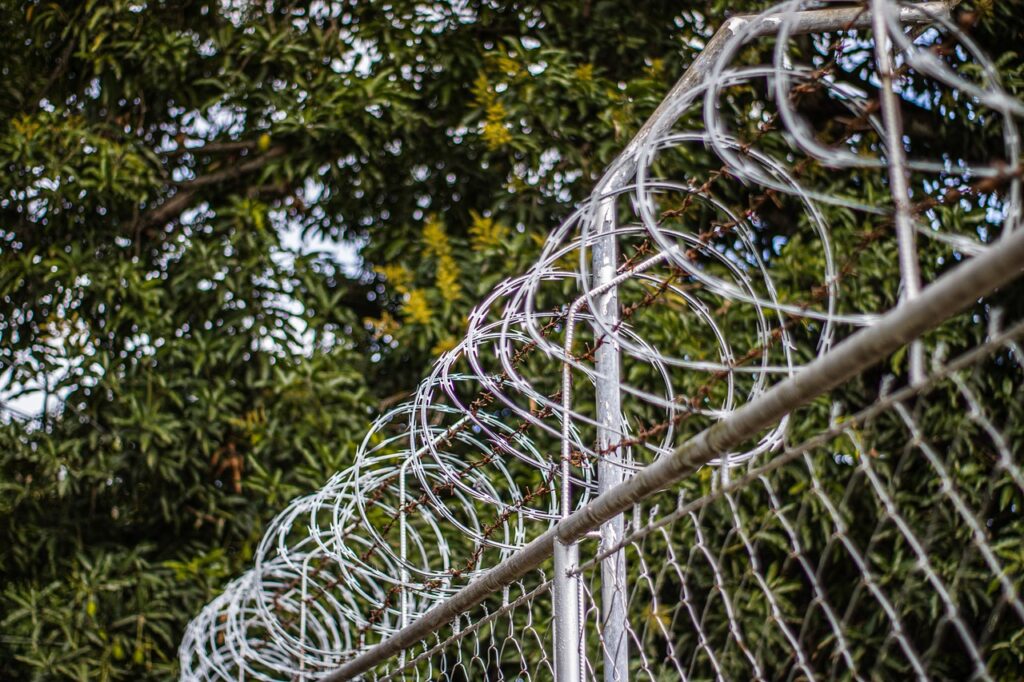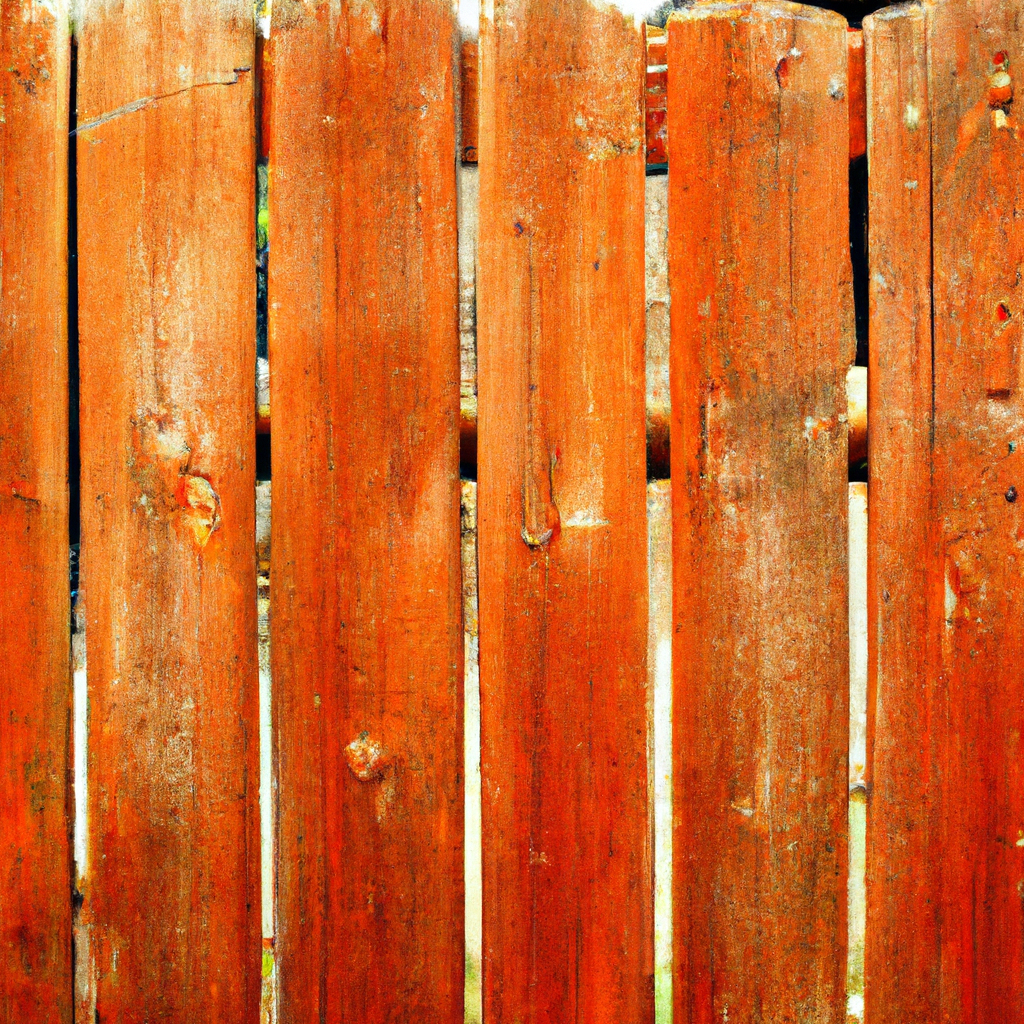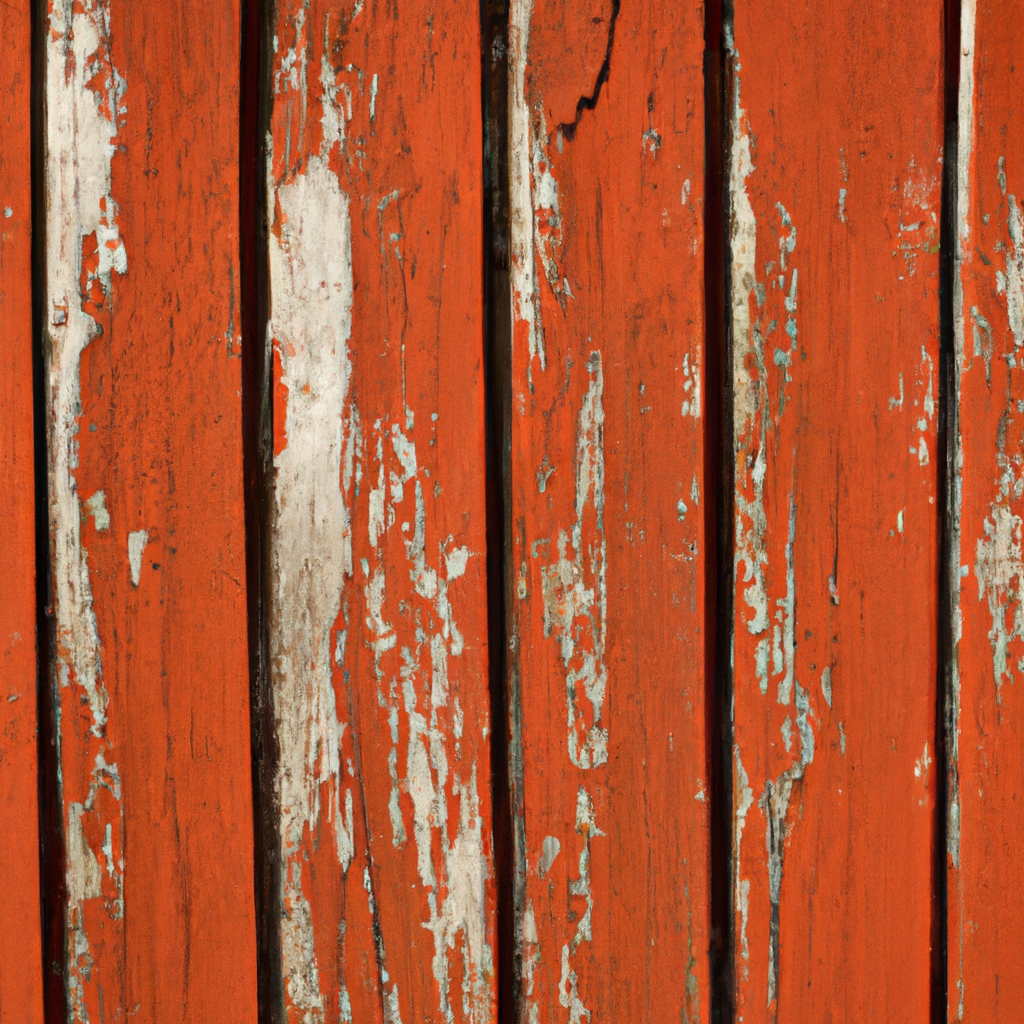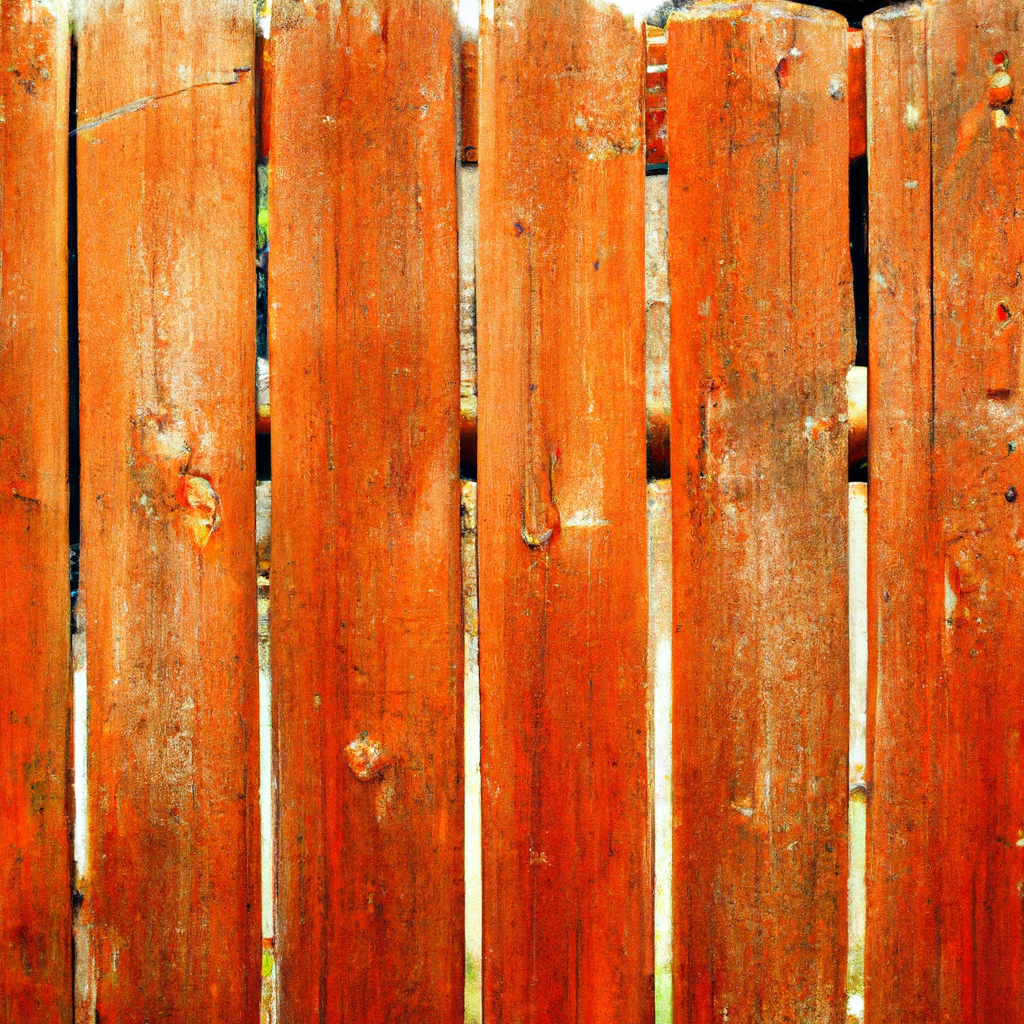If you’re looking to extend the lifespan of your fence stain, there are a few key tips and tricks you can follow to ensure its longevity. One important step is to properly prepare the surface before applying the stain, which includes cleaning and stripping any old or damaged stain. Additionally, choosing a high-quality stain that is specifically designed for outdoor use and offers UV protection can help protect the wood from the elements. Regular maintenance, such as cleaning and reapplying stain as needed, is also crucial for maintaining the appearance and durability of your fence. By following these guidelines, you can ensure that your fence stain not only looks great but also stands the test of time.

Choosing the Right Fence Stain
When it comes to choosing the right fence stain, there are several factors to consider. The first step is to take into account the material of your fence. Different materials may require different types of stain, so it’s important to choose one that is specifically formulated for the material you are working with.
Once you have determined the fence material, the next consideration is the stain color. This decision will greatly impact the overall look and feel of your fence. You can opt for a natural wood color to enhance the natural beauty of the material, or choose a colored stain to match your desired aesthetic.
In addition to the color, you also need to consider the type of stain. There are three main types to choose from: transparent, semi-transparent, and solid. Transparent stains allow the natural wood grain to show through, while semi-transparent stains add a subtle tint. Solid stains provide the most color coverage and are ideal for older or weathered fences.
Preparing the Fence Surface
Before applying any stain, it is crucial to properly prepare the surface of your fence. This ensures that the stain adheres properly and provides long-lasting protection. The first step in the preparation process is cleaning the fence. Remove any dirt, grime, or mildew using a mild detergent and a scrub brush or pressure washer.
After cleaning, inspect the fence for any damaged areas. Repair any loose or broken boards, and replace any damaged sections. This step is essential for ensuring a smooth and even application of stain.
Once the fence is clean and repaired, it’s time to sand the surface. Sanding helps to create a smooth and uniform base for the stain to adhere to. Use a medium-grit sandpaper and rub it along the grain of the wood. Take care to remove any rough spots or splinters.
Applying the Stain
Now that the fence surface is prepared, it’s time to gather the necessary tools for applying the stain. You will need a paintbrush or roller, a paint tray, and a sturdy ladder if your fence is tall. Make sure to choose tools that are appropriate for the size and shape of your fence.
Before applying the stain, it is important to protect the surrounding areas. Cover any plants, furniture, or other objects near the fence with plastic sheeting or drop cloths. This will prevent any accidental staining or damage.
When applying the stain, start from the top and work your way down, applying an even coat to each section. Use long, smooth strokes and be sure to cover the entire surface of the fence. Avoid over-application, as this can lead to an uneven finish.
Ensuring Proper Drying
Once the stain is applied, it is crucial to allow sufficient drying time. This ensures that the stain properly penetrates the wood and provides optimal protection. Follow the manufacturer’s instructions for drying time, as it can vary depending on the type of stain and weather conditions.
It is important to avoid excessive moisture during the drying process. Make sure there is no rain in the forecast and keep sprinklers or other sources of water away from the fence. Excessive moisture can cause the stain to bubble or peel, compromising its effectiveness.
Keep an eye on the weather conditions during the drying process. Extreme heat or direct sunlight can accelerate drying time and potentially cause the stain to dry unevenly. If necessary, provide some shade to the fence to ensure a consistent drying process.

Maintaining the Stained Fence
To extend the lifespan of your fence stain, regular maintenance is key. This includes regular cleaning and inspection to keep your fence in top condition. Clean the fence at least once a year using mild detergent and water. This will remove dirt, grime, and any mildew or mold growth.
If you notice any mildew or mold on your stained fence, address it promptly. Use a mixture of equal parts water and bleach to clean the affected area. Scrub gently with a brush and rinse thoroughly. Regularly inspect your fence for any signs of damage or wear, and make any necessary repairs or touch-ups.
Speaking of touch-ups, it’s important to periodically touch up the stain on your fence. Over time, exposure to the elements can cause the stain to fade or wear off. Apply a fresh coat of stain to any areas that show signs of wear, taking care to blend it in with the existing stain for a seamless finish.
Protecting Against UV Rays
One of the main reasons for staining a fence is to protect it from the damaging effects of the sun’s UV rays. To ensure maximum protection, it is important to choose a stain that is UV-resistant. These stains contain additives that help shield the wood from harmful UV rays, preventing fading and deterioration.
In addition to choosing a UV-resistant stain, it is also a good idea to apply a protective sealant over the stain. This extra layer of protection helps to further guard against UV rays and other environmental factors. Follow the manufacturer’s instructions for applying the sealant, and reapply as needed to maintain optimal protection.
Another way to protect your fence from UV rays is to provide shade. If possible, plant trees or install awnings or shade sails near the fence to provide some relief from direct sunlight. This can help to minimize sun damage and prolong the life of your stain.

Preventing Water Damage
Water damage can significantly reduce the lifespan of a fence stain, so it’s important to take steps to prevent it. Start by checking for proper drainage around your fence. Make sure that water is not pooling near the base of the fence, as this can lead to rot and other moisture-related issues.
To further protect against water damage, consider applying waterproofing products to your stained fence. These products help to create a barrier that repels water, preventing it from seeping into the wood. Follow the manufacturer’s instructions for application, and reapply as needed to maintain effectiveness.
Regularly inspect your fence for any signs of leaks or water damage. Look for discoloration, warping, or soft spots in the wood. If you notice any issues, address them promptly to prevent further damage and extend the lifespan of your fence stain.
Protecting Against Insects
Insects can pose a threat to the longevity of your fence stain, so it’s important to take preventive measures. Consider using an insect-resistant stain, which contains additives that repel common pests such as termites and carpenter bees. These stains help to deter insects and minimize the risk of damage.
In addition to using an insect-resistant stain, you can also apply insecticides or repellents to your fence. Follow the manufacturer’s instructions for application, and reapply as needed to maintain effectiveness. Regularly inspect your fence for any signs of insect activity, such as boreholes or sawdust, and take action if necessary.
Maintaining a clean fence is another way to deter insects. Remove any debris or vegetation that may attract pests. Regularly check for spider webs or other signs of insect infestation, and clean them away using a soft brush or cloth.

Avoiding Damage from Plants
Plants can cause damage to a stained fence if not properly managed. To prevent this, regularly trim any vegetation near the fence. This includes tree branches, shrubs, and vines that may come into contact with the surface. Keeping plants at a safe distance prevents them from rubbing against the stain and causing damage.
If you have persistent weeds or unwanted vegetation near your fence, consider applying herbicides or weed killers. Follow the manufacturer’s instructions for application, taking care to protect surrounding plants or grass. Regularly inspect the area for new growth and address it promptly to prevent damage.
In addition to trimming and weed control, you can also protect your fence by installing barriers. This can include a layer of gravel or mulch around the base of the fence to prevent direct contact with vegetation. Barriers help to minimize the risk of plant damage and extend the lifespan of your stained fence.
Regular Maintenance Routine
To ensure the continued beauty and effectiveness of your stained fence, it is important to establish a regular maintenance routine. This includes a cleaning schedule, inspection checklist, and reapplication frequency.
Set a cleaning schedule to regularly remove dirt, grime, and mildew from your fence. This can be done once a year or more frequently, depending on the level of exposure and local weather conditions. Stick to your schedule to prevent buildup and maintain the appearance of your fence.
Create an inspection checklist to regularly assess the condition of your fence. This should include checking for any signs of damage, wear, or insect activity. Inspections should be done at least once a year, but more frequent checks can help identify issues early and prevent further damage.
Lastly, determine the reapplication frequency for your stain. Over time, the stain may fade or wear off, leaving your fence vulnerable to the elements. Plan to reapply the stain every few years or as needed, based on the manufacturer’s recommendations and the condition of your fence.
Common Questions about Fence Stains
-
How often should I stain my fence?
- The frequency of staining depends on several factors, including the type of stain and the exposure of your fence to the elements. As a general guideline, plan to stain your fence every 2-3 years or as needed.
-
Can I stain my fence by myself, or do I need to hire a professional?
- Staining a fence can be a DIY project, but it does require some preparation and effort. If you are comfortable with basic tools and have the time and patience, you can stain your fence yourself. However, if you prefer to leave it to the professionals or have a large or complex fence, hiring a professional might be the better option.
-
Will staining my fence prevent it from rotting?
- While staining can provide some protection against rot, it is not a foolproof solution. It is important to choose a stain that includes rot-inhibiting components, and also take other preventive measures such as checking for proper drainage and addressing any water damage promptly.
-
Can I stain my fence in any weather?
- It is best to stain your fence when the weather is dry and mild. Avoid staining in extreme heat or direct sunlight, as this can cause the stain to dry too quickly and potentially result in an uneven finish. Similarly, avoid staining when rain is in the forecast, as the moisture can affect the adhesion and drying process of the stain.
-
Is it necessary to sand my fence before staining?
- Sanding your fence before staining is recommended, as it helps to create a smooth and uniform surface for the stain to adhere to. Sanding removes any rough spots or splinters, and allows for better penetration and absorption of the stain into the wood.
-
Can I apply stain directly to a new fence?
- It is generally recommended to allow a new fence to weather for a period of time before applying stain. This allows the wood to dry and settle, ensuring better adhesion and absorption of the stain. Consult the manufacturer’s recommendations for the specific waiting period.
-
How can I prevent my stained fence from fading?
- To prevent your stained fence from fading, choose a stain that is UV-resistant and apply a protective sealant over the stain. Additionally, providing shade to your fence by planting trees or installing awnings can help to minimize sun exposure and prolong the life of your stain.
-
Can I stain a fence that has previously been painted?
- Staining a fence that has previously been painted is possible, but it requires some additional steps. You will need to strip or sand off the existing paint to create a clean surface, and then proceed with the normal staining process. Consult the manufacturer’s instructions for specific guidance.
-
How do I know if my fence needs to be restained?
- Signs that your fence needs to be restained include fading, discoloration, peeling, or uneven wear of the existing stain. Additionally, if your fence is no longer repelling water or is showing signs of damage, it may be time to reapply the stain.
-
Can I change the color of my stained fence?
- Changing the color of a stained fence is possible, but it will require some additional steps. You will need to completely remove the existing stain using a stripper or sanding, and then proceed with the staining process using a new color. Take care to follow the instructions for the new stain to ensure optimal results.
